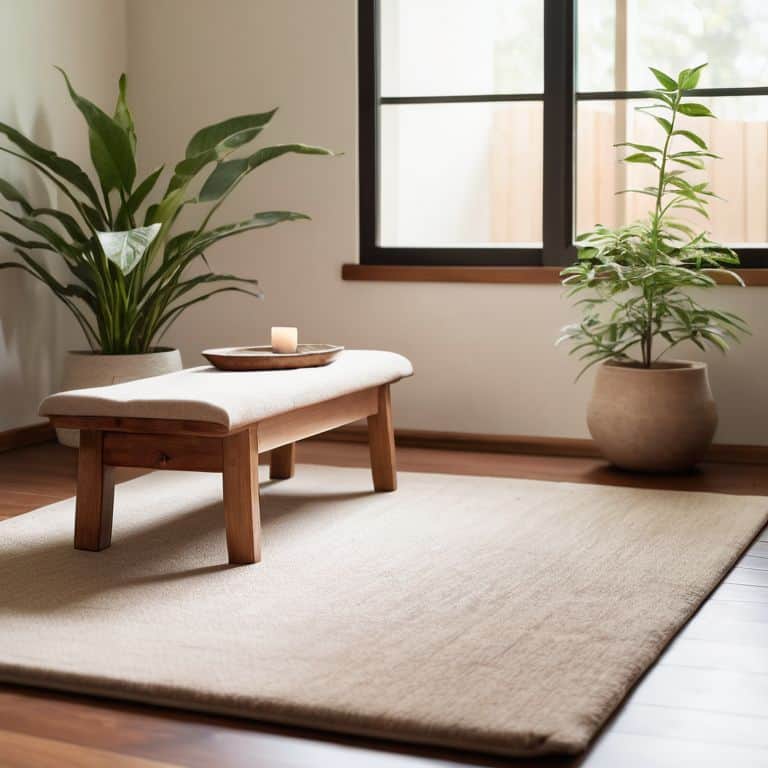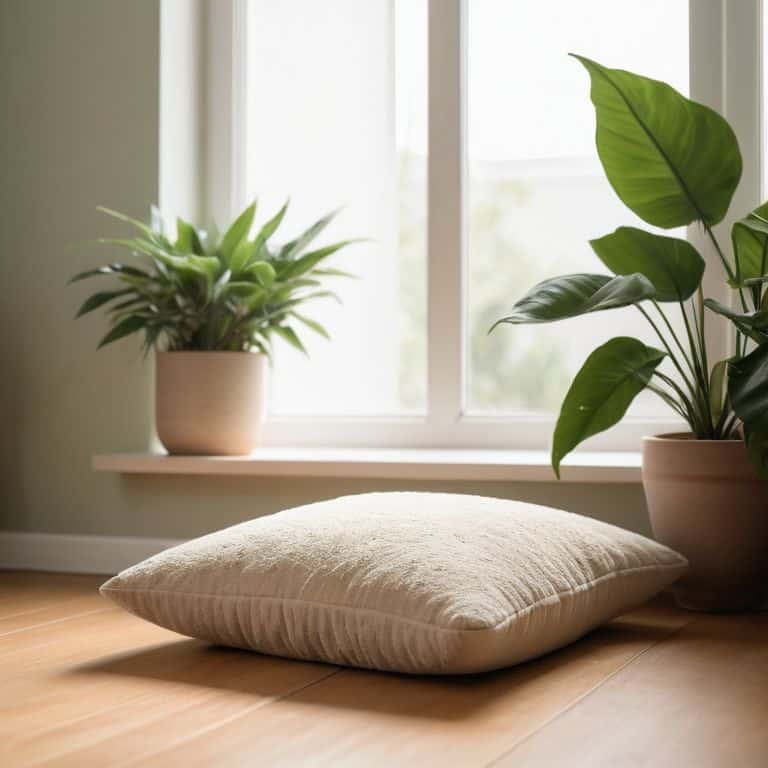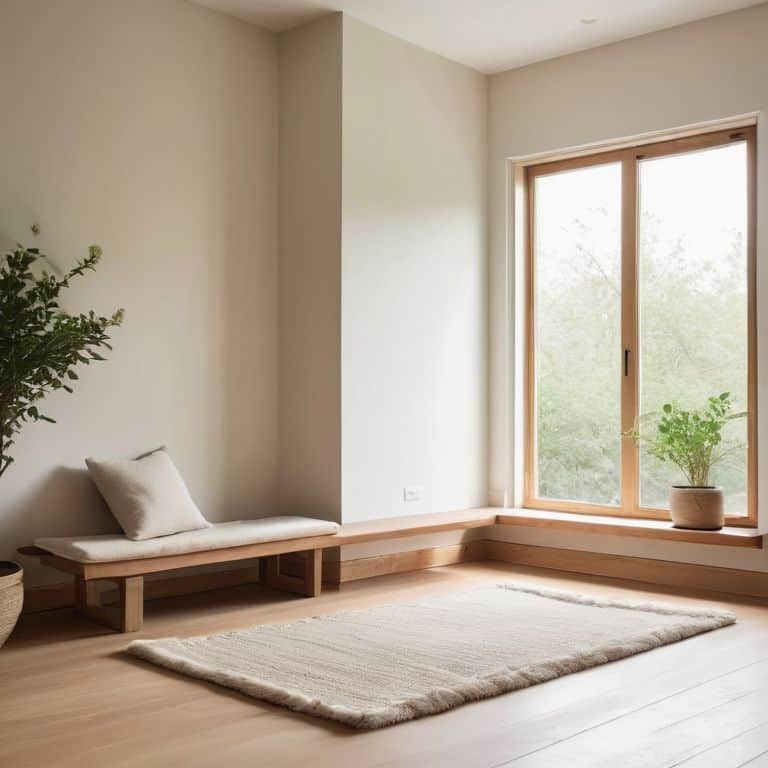I still remember the day I decided to create my own meditation space at home – it was a game-changer for my mental health. I had always thought that how to create a meditation space at home was a daunting task, requiring a lot of money and a huge spare room. But, as I delved deeper into the world of mindfulness, I realized that it’s actually quite simple. You don’t need a lot of space or a big budget to create a peaceful oasis in your home. In fact, even a small corner of your bedroom or living room can be transformed into a meditation sanctuary.
In this article, I’ll walk you through the process of creating your perfect meditation space at home, one simple step at a time. You’ll learn how to choose the right location, select the perfect furniture and decor, and even how to minimize distractions and create a peaceful atmosphere. My goal is to provide you with practical advice that you can apply immediately, without any fuss or hype. By the end of this guide, you’ll have a clear plan to create a meditation space that suits your needs and helps you achieve a sense of calm and clarity in your daily life.
Table of Contents
Guide Overview: What You'll Need

Total Time: 1 hour 45 minutes
Estimated Cost: $50 – $100
Difficulty Level: Easy
Tools Required
- Measuring Tape for measuring the room
- Level to ensure shelves are straight
- Pencil for marking the wall
- Drill for hanging items on the wall
Supplies & Materials
- Candles for creating a peaceful ambiance
- Plants to bring in a natural element
- Meditation Mat for sitting comfortably
- Wall Shelves for holding decorative items, 6 inches deep
- String Lights for adding a calming glow
- Sound System for playing calming music, with a 6 feet long cord
Step-by-Step Instructions
- 1. First, identify a quiet space in your home that can be dedicated to meditation. This could be a corner of your bedroom, a section of your living room, or even a backyard patio. Consider the noise level and foot traffic in the area to ensure it’s a peaceful spot where you can focus on your meditation practice. Take a few moments to _walk through your home_ and find the perfect spot that feels calm and serene to you.
- 2. Next, clear the space of any clutter or distractions. Remove any furniture or items that are not essential to your meditation practice. This will help you create a sense of _minimalism_ and simplicity, allowing you to focus on your breath and inner self. If you’re using a corner of a room, consider using a screen or room divider to separate the space and create a sense of _intimacy_.
- 3. Now, set the mood with lighting. Meditation spaces often feature soft, warm lighting that promotes relaxation. You can use table lamps, floor lamps, or string lights to create a calming atmosphere. Consider using _dim red bulbs_ or candles to create a peaceful ambiance, but be sure to follow safety guidelines to avoid any accidents.
- 4. The next step is to choose a comfortable seating option. You can use a meditation cushion, a yoga mat, or even a comfortable chair. The key is to find a seating arrangement that allows you to maintain good posture and relax your body. Consider _investing in a meditation chair_ or a ergonomic cushion that provides adequate support for your back and legs.
- 5. Once you have your seating arrangement, add some calming elements to the space. This can include plants, a water feature, or a peaceful piece of art. Choose items that _promote relaxation_ and help you focus on your meditation practice. Avoid using anything that might be distracting or stimulating, such as TVs or electronic devices.
- 6. To further enhance your meditation space, incorporate soothing sounds. You can use a sound machine or a fan to create a constant, calming noise. Alternatively, you can play _soft instrumental music_ or nature sounds in the background to create a peaceful atmosphere. Experiment with different sounds to find what works best for you and your meditation practice.
- 7. Finally, make your meditation space a ritual. Set aside a specific time each day to meditate, and try to stick to it. You can also create a pre-meditation routine, such as lighting a candle or burning incense, to signal to your mind that it’s time to _relax and focus_. By creating a consistent routine, you can make meditation a sustainable and enjoyable part of your daily life.
Find Your Inner Peace

As you settle into your newly created meditation space, remember that finding your inner peace is a journey, not a destination. To enhance your experience, consider the concept of mindful decor for meditation rooms, where every element is chosen to promote calmness and serenity. This can include selecting calming color schemes for meditation spaces that resonate with you, such as soothing blues or greens, to create a sense of tranquility.
Incorporating natural elements into your meditation area can also be incredibly beneficial. Incorporating nature into meditation areas can be as simple as adding a small potted plant or a vase with fresh flowers. This not only purifies the air but also creates a sense of connection to the outside world, promoting a feeling of balance and harmony. By bringing the outdoors in, you can deepen your meditation practice and foster a greater sense of well-being.
To take your meditation practice to the next level, consider designing a home altar for mindfulness. This can be a dedicated space where you display meaningful objects, such as candles, statues, or personal mementos, that inspire you to cultivate mindfulness and gratitude. By creating a peaceful atmosphere that nurtures your mind, body, and spirit, you can unlock the full benefits of meditation at home and embark on a path of lasting transformation and growth.
Calming Color Schemes
When it comes to creating a peaceful atmosphere, the colors you choose can play a significant role. Calming color schemes can help reduce stress and anxiety, making it easier to relax and focus on your meditation practice. Consider soft, muted tones such as light blue, pale green, or creamy white. These colors can create a sense of serenity and tranquility, making your meditation space feel like a calming oasis.
You can incorporate these colors into your space through walls, furniture, or even accessories like throw pillows or blankets. Remember, the goal is to create a soothing environment that promotes relaxation and inner peace. By choosing calming colors, you can set the tone for a peaceful and meditative experience, allowing you to unwind and recharge in your own little sanctuary.
Creating Peaceful Atmosphere
To create a peaceful atmosphere, consider the sensory details that promote relaxation. Soft, calming colors like light blues or pale greens can set the tone for serenity. You can also incorporate natural elements, such as plants or a water feature, to bring a sense of tranquility to your space. I recommend exploring different textures, like plush rugs or smooth stones, to add depth and coziness to your meditation area.
By thoughtfully selecting these elements, you’ll be able to craft an environment that nurtures your mind, body, and spirit. Remember, it’s all about creating a space that feels like a warm hug for your soul. Experiment with different combinations to find what works best for you, and don’t be afraid to get creative and make it your own.
5 Essential Tips for Your Meditation Oasis
- Choose a Quiet and Private Location: Find a spot in your home where you can meditate without distractions or interruptions, such as a corner in your bedroom or a quiet room in the backyard
- Select Calming Colors and Textures: Incorporate soothing colors like light blues, pale greens, or neutral tones, and add textures like plush rugs, natural wood, or plants to create a peaceful ambiance
- Minimize Clutter and Maximize Natural Light: Keep your meditation space clutter-free and allow plenty of natural light to pour in, which can help regulate your mood and energy levels
- Invest in a Comfortable Seating Option: Whether it’s a meditation cushion, a yoga mat, or a comfortable chair, make sure you have a seating option that supports your back and allows you to relax
- Add Soothing Sounds and Scents: Consider incorporating calming sounds like a water fountain or nature sounds, and use essential oils or scented candles to create a peaceful atmosphere that promotes relaxation and mindfulness
3 Key Takeaways to Create Your Meditation Space
Designate a quiet and clutter-free area in your home as your meditation space, making it easy to commit to your mindfulness practice
Choose calming colors and elements, such as plants or a water feature, to create a peaceful atmosphere that promotes relaxation and reduces stress
Start small and be patient with yourself as you develop your meditation practice, remembering that the goal is to cultivate inner peace and clarity, not to create a perfect space
Finding Serenity at Home
As you create your meditation space, remember that it’s not just about the physical surroundings, but about crafting a sanctuary that nurtures your soul and calms your mind, one gentle step at a time.
Hannah Jensen
Embracing Serenity: A Lasting Sanctuary

Creating a meditation space at home is a journey that involves several key elements, including finding your inner peace, designing a peaceful atmosphere, and selecting calming color schemes. By following these steps, you can transform any area of your home into a serene oasis that nurtures both body and mind. Remember, the goal is to craft a space that resonates with your soul, where you can escape the hustle and bustle of daily life and reconnect with your inner self. Whether you’re a seasoned meditator or just starting out, this sanctuary will become your haven, a place to unwind, reflect, and grow.
As you complete your meditation space, recall that it’s not just about the physical environment, but about the intention and energy you invest in it. This space is a reflection of your commitment to your well-being, a symbol of self-love and self-care. So, take a deep breath, step into your newly created sanctuary, and let the journey of self-discovery begin. Allow yourself to be present, to let go of worries, and to embrace the peace that resides within you. With patience, practice, and an open heart, you’ll find that your meditation space becomes more than just a room – it becomes a gateway to a more mindful, compassionate, and fulfilling life.
Frequently Asked Questions
What are the most essential items to include in a home meditation space?
To get started, consider including a few essentials in your meditation space: a comfortable cushion or chair, a peaceful water feature, and some calming plants like lavender or bamboo. These simple elements will help you create a serene atmosphere, perfect for mindfulness and relaxation.
How can I minimize distractions and noise in my meditation area?
To minimize distractions and noise, consider using sound-absorbing materials, earplugs, or white noise machines. You can also choose a quiet spot in your home, away from high-traffic areas, and schedule your meditation sessions during less busy times of the day. I recommend trying out different noise-reducing methods to find what works best for you.
Are there any specific meditation space layouts or designs that are considered most effective for relaxation and focus?
Let’s explore some effective layouts. I recommend considering a circular or oval shape, as it promotes a sense of unity and flow. Alternatively, a cozy reading nook with a comfortable seating area can also work wonders. You can also try a minimalist approach, keeping the space clutter-free and simple to reduce distractions.
